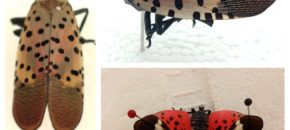
It’s Here! Spotted lanternfly was found on Friday August 10 on a commercial Hunterdon County fruit and vegetable farm. The insect was found in a Tree of Heaven being used as a trap tree with a plastic catch basin placed around the base of the tree, and the first 5-6 feet of the trunk sprayed […]
Continue reading...
